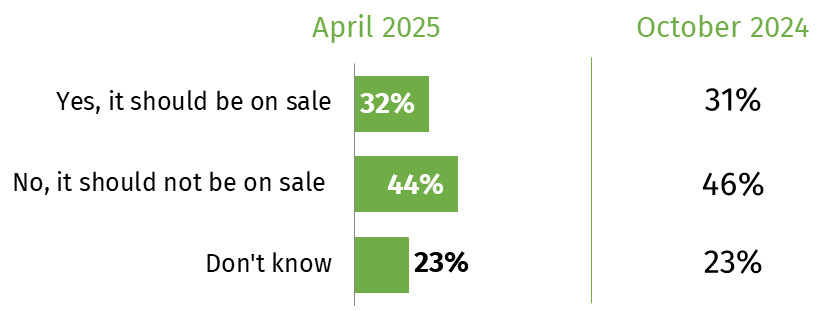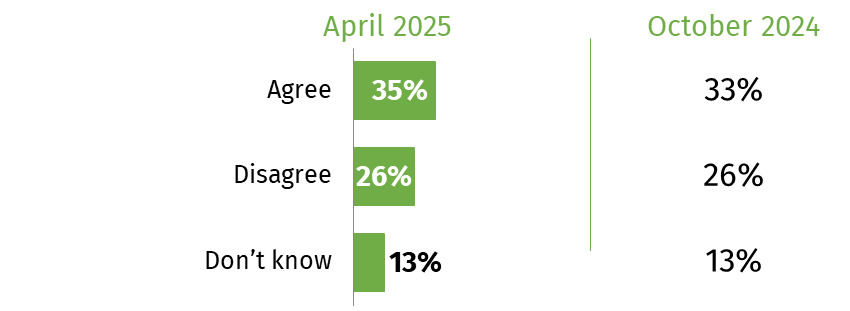Consumer Insights Tracker - April to June 2025 Report
1. Key findings
-
Approximately a fifth (22%) were worried about being able to afford food in June 2025. This is in line with May (22%) and March (21%) but is slightly lower than the 25% recorded in April 2025.
-
The most reported money saving behaviour in June 2025 is eating food past its use by date (66%), up from 63% in May. 63% reported eating leftovers that had been kept in the fridge for more than two days and 55% said they had cut down on the amount of food bought.
-
Food prices were the top food concern from April to June 2025, as in previous waves. This was followed by a range of other concerns such as food waste and the amount of salt, sugar, fat or calories in food (both of which were added to the tracker in April).
-
Among those with some knowledge of the Food Standards Agency (FSA), the proportion who trust the FSA to do its job rose from 61% in April 2025 to 66% in May (the highest figure seen across the time series), before returning to comparable levels to March 2025 (64%) in June (64%). This continues the upward trend seen since December 2024.
-
In June 2025, one in nine reported having used cannabidiol (CBD) products in the last 6 months (11%), consistent with December 2024. Of those who had used CBD products in the last 6 months, 32% said they typically consumed 1-10mg a day.
-
Close to four in five (79%) were aware of the term ‘lab grown meat’ in April 2025, an increase from 72% in October 2024. In the same period, the proportion who think cell-cultivated meat should be on sale in the future (31% Oct 24, 32% Apr 25) and would be willing to include it in their diet (26% Oct 24, 28% Apr 25) has remained consistent.
2. Background and methodological information
2.1. Survey topics
This report presents findings for topics we track regularly including consumer concerns in relation to food, food affordability, and confidence in the FSA as a regulator. The core questions in this survey underwent review before the launch of the April 2025 survey. Some new questions and/or statements were introduced, resulting in a new timeseries for some questions and/or statements. Please see the notes on each of the figures in this report for more information.
Between April and June 2025, questions were also asked about consumer views on food regulations (April), cell-cultivated products (CCPs - April), Antimicrobial resistance (May) and CBD products (June). Findings for CCPs and CBD products can be found in this report. Data for all topical questions can be found in the accompanying data tables.
2.2. Method
-
This research was conducted online using the YouGov panel which gives access to 400,000 active panel members in the UK.
-
This report presents findings from April – June 2025. Where appropriate, comparisons are made to previous waves since July 2023.
-
Across England, Wales and Northern Ireland 2,120 people took part in the survey in April (4th – 7th), 2,153 in May (2nd – 7th) and 2,143 in June 2025 (6th – 10th).
-
Quotas were set by age, gender, education and region. The data is also weighted to be representative of the population by these demographic variables. All results are based on final weighted data.
2.3. Notes for interpretation
-
Reporting convention (↑ / ↓ on graphs): The Consumer Insights Tracker uses t-tests to assess differences over time and between groups, and highlights those where the p value is <0.05. Due to the quota sampling methodology used this is not an exact test of whether differences are statistically significant and indicative of real changes in wider population. However, they may highlight where there could be shifts in behaviour or attitudes and further research would be required to assess if these changes are real.
-
Online panel survey: As respondents are selected from an online panel, people without internet access are not represented.
-
Percentages: Figures may not add up to 100% on graphs due to figures being rounded to the nearest whole number, or because in some questions, respondents were able to select multiple answers. In some cases, rounding may make changes appear smaller or larger than they are in the underlying data. Statistical tests have been conducted using the unrounded figures.
3. Results
3.1. Food affordability
The proportion who reported worrying about their household not being able to afford food rose slightly in April 2025 (25%) before returning to levels comparable to March (21%) in May (22%) and June 2025 (22%).
The proportion of respondents who reported eating food past its use by date to save money increased in June 2025 to 66% to become the most reported money saving behaviour (as shown in Figure 2).
3.2. Food concerns
From April to June 2025 the top food concern remained food prices (as shown in Figure 3).
3.3. The Food Standards Agency
As shown in Figure 4, trust in the Food Standards Agency (FSA) rose slightly between April 2025 (61%) and May 2025 (66%) but returned to comparable levels with March 2025 (64%) in June 2025 (64%). Since December 2024 (57%), trust has been trending upwards.
3.4. Food safety topics
From April to June 2025, the food safety topics that respondents said they had seen, heard or read about most were the recall of food products and food hygiene ratings of businesses (as shown in Figure 5).
Across the quarter, respondents most commonly said they had seen, read or heard something about any of these topics in the news (52%) on social media (36%) and word of mouth (24%).
3.5. Cannabidiol (CBD)
In June 2025, 1 in 9 (11%) reported they had consumed CBD in the last 6 months (as shown in Figure 6).
As shown in Figure 7, among those who reported they had consumed CBD, close to a third (32%) reported they consumed 1-10mg on a typical day. 42% said they do not know how much they consume.
Most (54%) who reported they had consumed CBD in the last 6 months said they decide on a suitable dose by following the instructions on the packaging. This has remained consistent since December 2024 (53%), as shown in Figure 8.
Figure 9 shows CBD drinks (63%) and oils (60%) are the products that respondents were most likely to report using in the last 6 months in June 2025. Oils were the product used most often with 16% reporting that they used them most days or every day.
3.6. Cell-cultivated products (CCPs)
As shown in Figure 10, awareness of the term ‘lab grown meat’ was highest in April 2025 (79%); an increase since October 2024 (72%). Awareness of cell-cultivated meat and products remained stable between October 2024 and April 2025.
Figure 11 shows that in April 2025, respondents were more likely to think cell-cultivated meat should not be on sale (44%) than to think it should be on sale (32%) in the UK in the future. Similarly, they were more likely to say they are not willing to include it in their diet (57%) than to say they are willing (28%), as shown in Figure 12.
As shown in Figure 14, animal welfare (44%) and sustainability (36%) were the most common perceived benefits of cell-cultivated meat in April 2025, while common concerns included safety (53%) and a perception of cell-cultivated meat being ‘unnatural’ (49%) (see Figure 15).
4. Further information
-
visit our Consumer Insights Tracker webpage
-
or please contact the FSA’s Analytics Unit
Acknowledgements
FS code FS900280

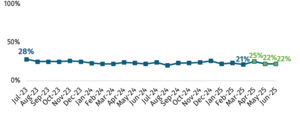


.png)



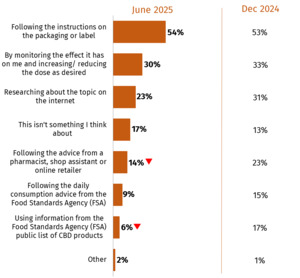

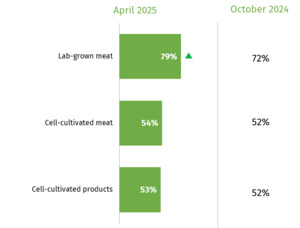



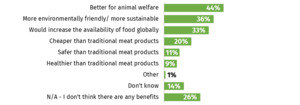
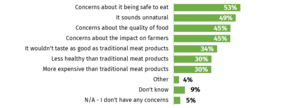

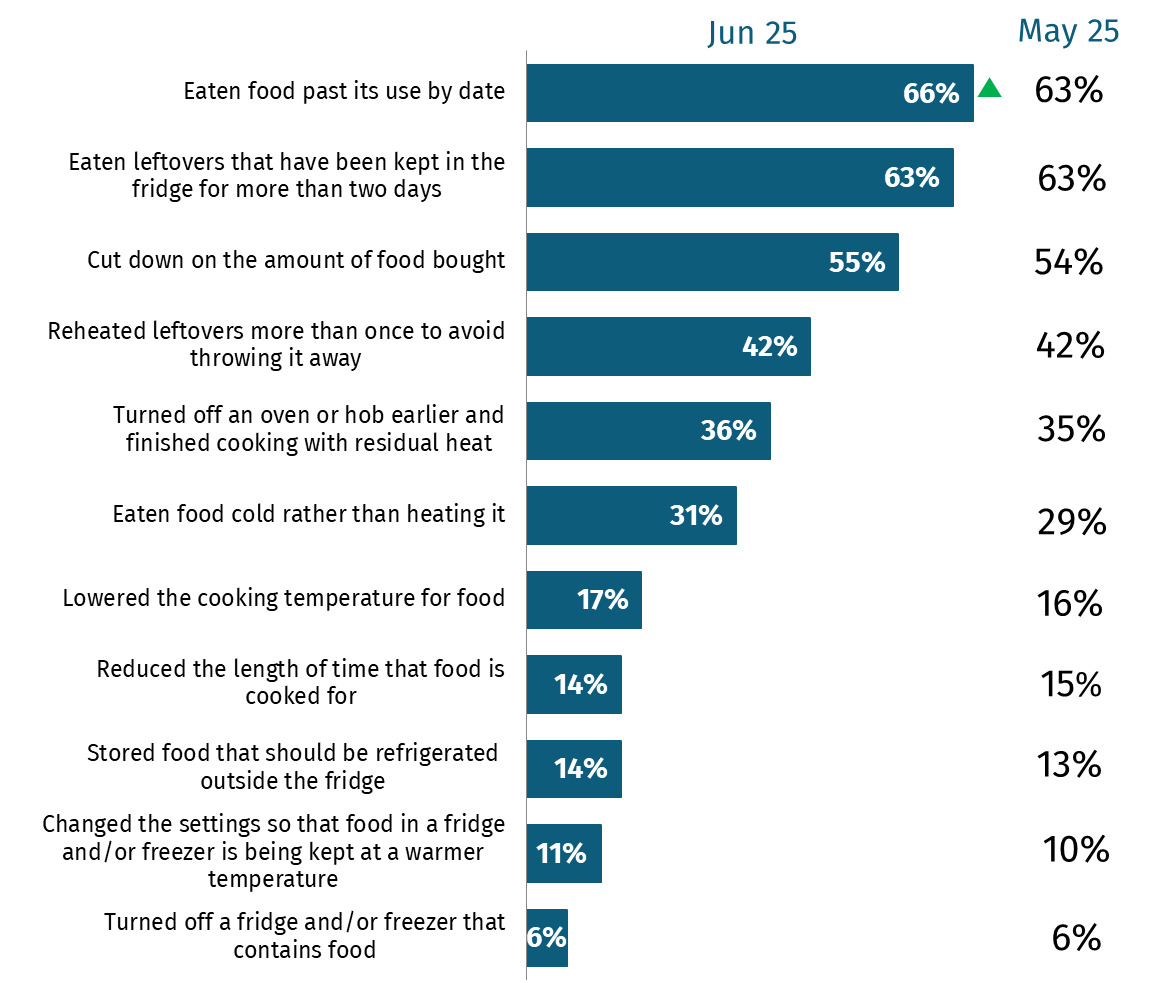

.png)






